Combining Machine Learning and Logical Reasoning
(Press ? for help, n and p for next and previous slide)
Two AI Paradigms
Data-Driven AI
Adding data to improve the model:
Knowledge-Driven AI
Adding knowledge to speed-up problem solving and learning:
- Theorem provers
- Rule-based expert systems
- Intelligent forms of search (semantic web, knowledge graph, etc.)
- Constraint-based approaches (SAT, CLP, SMT, etc.)
- Program synthesis / Inductive Logic Programming

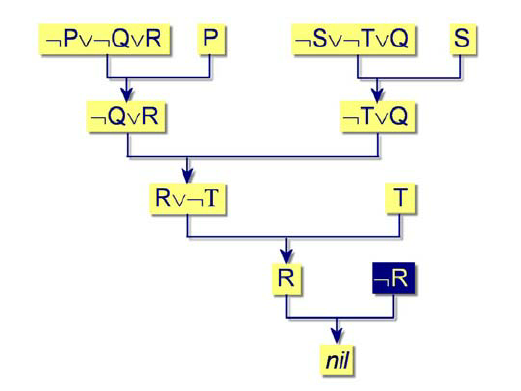
Example: Learning Quick Sort
Examples:
Background Knowledge (Primitive Predicates):
Leanred Hypothesis:
Combining Subsymbolic and Symbolic AI
Yoshua Bengio: From System 1 Deep Learning to System 2 Deep Learning.

(NeurIPS’2019 Keynote)
System 1 vs System 2
| Representation | Statistical / Neural | Symbolic |
|---|---|---|
| Examples | Many | Few |
| Data | Tables | Programs / Logic programs |
| Hypotheses | Propositional/functions | First/higher-order relations |
| Learning | Parameter optimisation | Combinatorial search |
| Explainability | Difficult | Possible |
| Knowledge transfer | Difficult | Easy |
Boolean Algebra
A Boolean algebra is a complemented lattice with binary operators \(\wedge\), \(\vee\) and a unary operator \(\neg\) and elements \(1\) and \(0\) s.t. commutative, associative and distributive laws hold.
- conjunction: \(x\wedge y= \mathrm{inf}\{x,y\}\)
- disjunction: \(x\vee y=\mathrm{sup}\{x,y\}\)
- negation: \(\neg x=\bar{x}\)
- implication: \(x\rightarrow y=\neg x\vee y\)
Many-Valued Logic
Finite set \(W_m=\{\frac{k}{m-1}\mid 0\leq k\leq m-1\}\) or infinite set \(W_\infty =[0,1]\)
- conjunction: \(x\wedge y=\mathrm{min}\{x,y\}\)
- Łukasiewicz: \(x\& y=\mathrm{max}\{0,x+y-1\}\) (“weak and”)
- Independent fuzzy set: \(x\wedge y=x\cdot y\)
- disjunction: \(x\vee y=\mathrm{max}\{x,y\}\)
- Noisy-or: \(x\vee y= 1-x\cdot y\)
- negation: \(\neg x=1-x\)
- implication: \(x\rightarrow y=?\)
- Łukasiewicz: \(\mathrm{min}\{1, 1-u+v\}\)
- Gödel: \(1\) if \(x\leq y\) else \(0\)
- T-norm: \(x\rightarrow_T y=\mathrm{sup}\{z∣T(x,z)\leq y\}\)
- …
“Next-Gen” AI
- Statistical relational models
- 1992: Knowledge Base Model Construction (Wellman, Breese & Goldman)
- Neural relational models
- 1994: KBANN (Towell & Shavlik), PCMLP (Hölldobler & Kalinke)
- 1999: C-IL2P (Garcez & Zaverucha)
- Probabilistic logic programming
- Probabilistic logic (Nilsson, 1986), Probabilistic logic programs (Dantsin, 1992)
- 1995: Distribution semantics (Sato)
Route 1:
Statistical / Neural Relational Models
Knowledge Base Model Construction
Semantics: Logical relations \(\Leftrightarrow\) Statistical correlation. e.g.,
can be interpreted as:
KBANN (Towell & Shavlik, 1994)
Semantics:
- The sign of \(W\) is determined by negation symbol
Markov Logic (Richards & Domingos, 2006)
Semantics:
- \(w_i\): weight of formula \(i\)
- \(n_i\): number of true atoms in formula \(i\)
Modern Neuro-Symbolic Methods
- Neural Module Networks (Andreas, et al., 2016)
- Logic Tensor Network (Serafini & Garcez, 2016)
- Neural Theorem Prover (Rocktäschel & Riedel, 2017)
- Differential ILP (Evans & Grefenstette, 2018)
- Predicate Network (Shanahan et al., 2019)
- NLProlog (Weber et al., 2019)
- DiffLog (Si et al., 2019)
- Neural Logic Machines (Dong et al., 2019)
Neural Theorem Prover (Rocktäschel and Riedel, 2017)
Graph Neural Nets
(Wu et al., A Comprehensive Survey on Graph Neural Networks. arxiv 2019)
Heavy Learning / Light Reasoning
Difficult to extrapolate:
(Trask et al., 2018)
Heavy Learning / Light Reasoning
- Not really logical
- Limited hypothesis formulation:
- Dyadic predicates and Chain rules;
- Fixed structure;
- Difficult to exploit complex background knowledge (e.g., recursive)
- Embeddings
- Cannot extrapolate
- Increase the requirement of large training data
- Reduce interpretability
- Hard to learn rule structure
- efficient inference only available with fixed graphical structure
- Where do the rules come from?
Route 2:
Probabilistic Logic
Distribution Semantics (Nilsson, 1986; Sato, 1995)
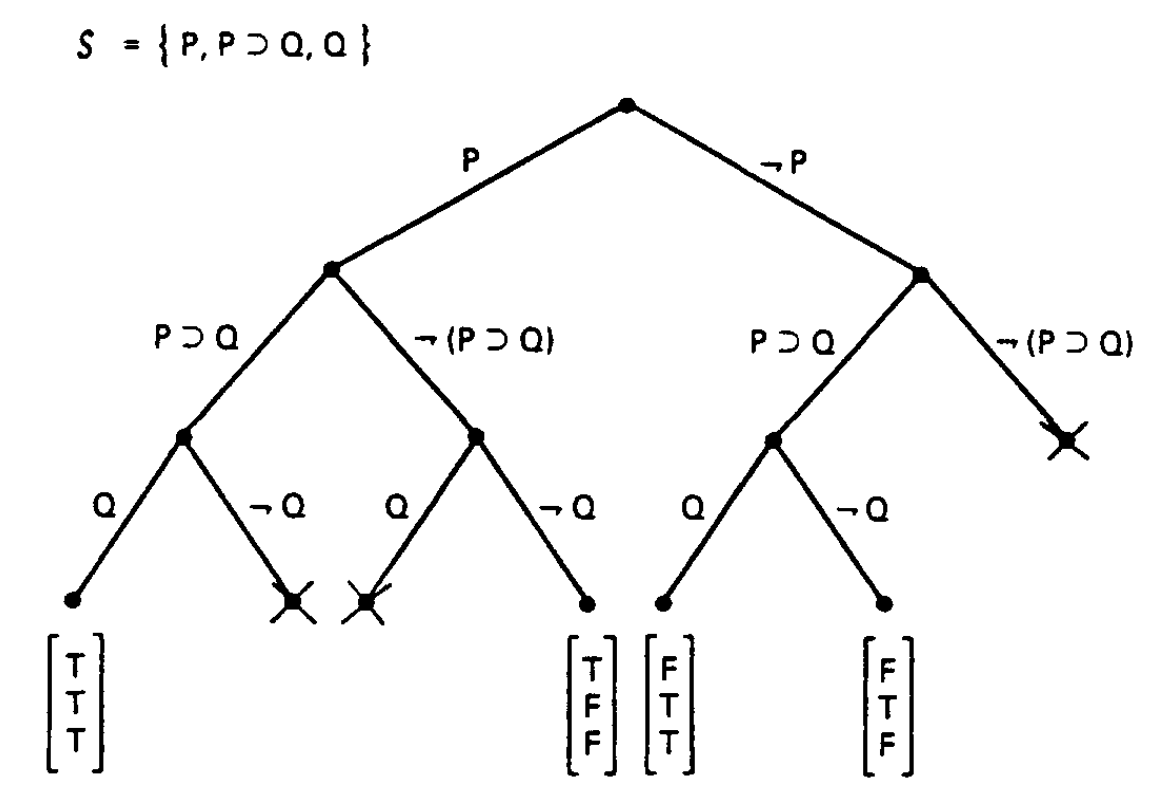 Semantics: Distribution on propositions. Assuming all groundings (\(f_i\)) are independent:
Semantics: Distribution on propositions. Assuming all groundings (\(f_i\)) are independent:
Probability of atom \(a\) being \(True\):
Probabilistic Logic Programs
Problog (De Raedt & Kimmig, 2015): An example of noisy-or rules:
%% Logic rules
0.3::stress(X) :- person(X).
0.2::influences(X,Y) :- person(X), person(Y).
smokes(X) :- stress(X).
smokes(X) :- friend(X,Y), influences(Y,X), smokes(Y).
0.4::asthma(X) :- smokes(X).
%% Facts
person(1). person(2). person(3). person(4).
friend(1,2). friend(4,2). friend(2,1). friend(2,4).
friend(3,2).
%% Observed facts
evidence(smokes(2),true). evidence(influences(4,2),false).
%% unknown facts
query(smokes(1)). query(smokes(3)). query(smokes(4)).
query(asthma(1)). query(asthma(2)). query(asthma(3)). query(asthma(4)).
Inference result:
prob(smoke(1), 0.50877). prob(smoke(3), 0.44). prob(smoke(4), 0.44).
prob(asthma(1), 0.203508). prob(asthma(2), 0.4). prob(asthma(3), 0.176).
prob(asthma(4), 0.176).
Inference
Weighted Model Counting: Compile logic formulae to a DAG then count possible worlds.
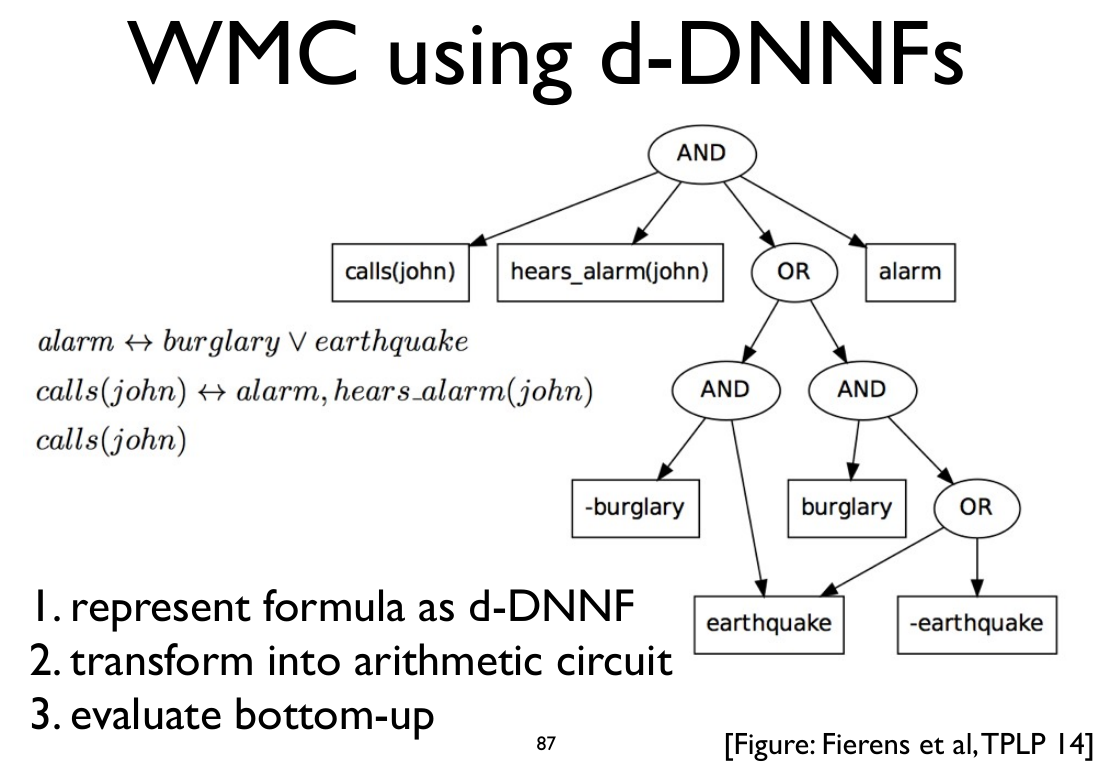
Parameter Learning
Define the structure of logic rules:
%% Rules
t(_)::stress(X) :- person(X).
t(_)::influences(X,Y) :- person(X), person(Y).
smokes(X) :- stress(X).
smokes(X) :- friend(X,Y), influences(Y,X), smokes(Y).
%% Facts
person(1). person(2). person(3). person(4).
friend(1,2). friend(4,2). friend(2,1). friend(2,4).
friend(3,2).
%% examples
evidence(smokes(2),false).
evidence(smokes(4),true).
evidence(influences(1,2),false).
evidence(influences(4,2),false).
evidence(influences(2,3),true).
evidence(stress(1),true).
Learned weights:
0.666666666666667::stress(X) :- person(X).
0.339210385615516::influences(X,Y) :- person(X), person(Y).
Heavy Reasoning / Light Learning
Cannot solve problems like this…
Heavy Reasoning / Light Learning
- Very complex probabilistic logical inference
- Hard to use advanced symbolic optimisation techniques (Prolog, ASP, SAT, SMT, etc.)
- Usually use variational inference and other approximated methods
- Symbolic representation
- Where do the symbols come from? (Russell, 2015)
- Unnecessary independence assumptions
- Fuzzy operators, etc.
- Hard to learn rule structure
- efficient inference only available with compiled rules
- Where do the rules come from?
A More Natural Way
The “head variants”
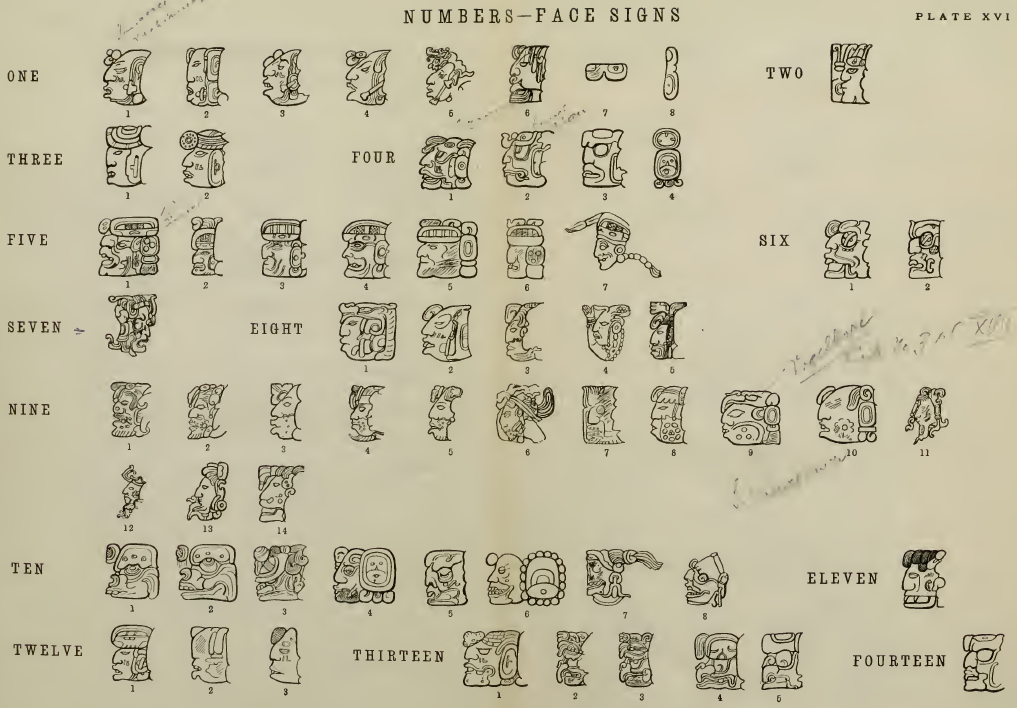
Mayan Calendar
Cracking the glyphs: They Must Be Consistent!
- (1.18.5.4.0): the 275480 day from origin
- (1 Ahau): the 40th day of that year
- (13 Mac): in the 13 month of that year
Abductive Reasoning
- Data-driven / mostly noisy / low-level statistical perception
- Knowledge-driven / mostly deterministic / high-level symbolic reasoning
The Abductive Learning Framework (ABL)
Training examples: $⟨ x,y⟩ $.
- Machine learning (e.g., neural net):
\[ z=f(x;\theta)=\text{Sigmoid}(P_\theta(z|x))\]
- Learns a perception model mapping raw data (\(x\)) ⟶ logic facts (z);
- Logical Reasoning (e.g., logic program):
\[B\cup z\models y\]
- Deduction: infers the final output (\(y\)) based on \(z\) and background knowledge (\(B\));
- Abduction: infers pseudo label (revised facts) $z'$ to improve perception model $f(x;\theta)$;
- Induction: learns (first-order) logical theory \(H\) such that \(B\cup \color{#CC9393}{H}\cup z\models y\);
- Optimisation:
- Maximises the consistency of \(H\cup z\) and \(f\) w.r.t. \(\langle x, y\rangle\) and \(B\).
Supervised Learning
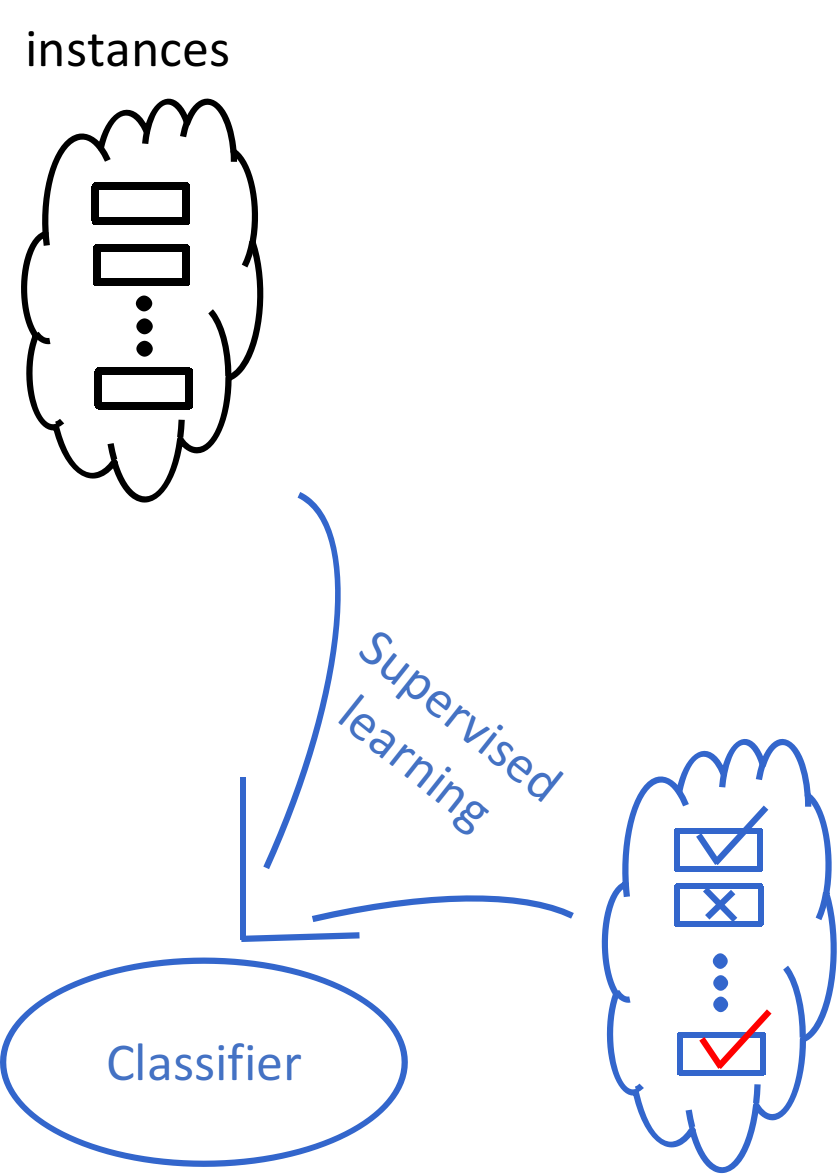
Abductive Learning

Handwritten Equation Decipherment
Task: Image sequence only with label of equation’s correctness
- Untrained image classifier (CNN) \(f:\mathbb{R}^d\mapsto\{0,1,+,=\}\)
- Unknown rules: e.g.
1+1=10,1+0=1,…(add);1+1=0,0+1=1,…(xor). - Learn perception and reasoning jointly.
Implementation

Optimise consistency by Heuristic Search
- Heuristic function for guessing the wrongly perceived symbols: \[\text{symbols to be revised}=\delta(z)\]
- Abduce revised assignments of \(\delta(z)\) that guarantee consistency: \[ B\cup H\cup \underbrace{\overbrace{z\backslash\delta(z)}^{\text{unchange}} \cup \overbrace{{\color{#CC9393}{r_\delta}}(z)}^{\text{revise}}}_{\text{pseudo-labels }z'} \models y \]
Experiment
- Data: length 5-26 equations, each length 300 instances
- DBA: MNIST equations;
- RBA: Omniglot equations;
- Binary addition and exclusive-or.
- Compared methods:
- ABL-all: Our approach with all training data
- ABL-short: Our approach with only length 7-10 equations;
- DNC: Memory-based DNN;
- Transformer: Attention-based DNN;
- BiLSTM: Seq-2-seq baseline;
Training Log
%%%%%%%%%%%%%% LENGTH: 7 to 8 %%%%%%%%%%%%%%
This is the CNN's current label:
[[1, 2, 0, 1, 0, 1, 2, 0], [1, 1, 0, 1, 0, 1, 3, 3], [1, 1, 0, 1, 0, 1, 0, 3], [2, 0, 2, 1, 0, 1, 2], [1, 1, 0, 0, 0, 1, 2], [1, 0, 1, 1, 0, 1, 3, 0], [1, 1, 0, 3, 0, 1, 1], [0, 0, 2, 1, 0, 1, 1], [1, 3, 0, 1, 0, 1, 1], [1, 0, 1, 1, 0, 1, 3, 3]]
****Consistent instance:
consistent examples: [6, 8, 9]
mapping: {0: '+', 1: 0, 2: '=', 3: 1}
Current model's output:
00+1+00 01+0+00 0+00+011
Abduced labels:
00+1=00 01+0=00 0+00=011
Consistent percentage: 0.3
****Learned Rules:
rules: ['my_op([0],[0],[0,1])', 'my_op([1],[0],[0])', 'my_op([0],[1],[0])']
Train pool size is : 22
...
This is the CNN's current label:
[[1, 1, 0, 1, 2, 1, 3, 3], [1, 3, 0, 3, 2, 1, 3], [1, 0, 1, 1, 2, 1, 3, 3], [1, 1, 0, 1, 0, 1, 3, 3], [1, 0, 1, 1, 2, 1, 3, 3], [1, 1, 0, 1, 0, 1, 3, 3], [1, 0, 3, 3, 2, 1, 1], [1, 1, 0, 1, 2, 1, 3, 3], [1, 1, 0, 1, 2, 1, 3, 3], [3, 0, 1, 1, 2, 1, 1]]
****Consistent instance:
consistent examples: [0, 1, 2, 3, 4, 5, 6, 7, 8, 9]
mapping: {0: '+', 1: 0, 2: '=', 3: 1}
Current model's output:
00+0=011 01+1=01 0+00=011 00+0=011 0+00=011 00+0=011 0+01=00 00+0=011 00+0=011 1+00=00
Abduced labels:
00+0=011 01+1=01 0+00=011 00+0=011 0+00=011 00+0=011 0+01=00 00+0=011 00+0=011 1+00=00
Consistent percentage: 1.0
****Learned feature:
Rules: ['my_op([1],[0],[0])', 'my_op([0],[1],[0])', 'my_op([1],[1],[1])', 'my_op([0],[0],[0,1])']
Train pool size is : 77
Performance
Test Acc. vs Eq. length
Abductive Knowledge Induction
Example: Accumulative Sum
A task from Neural arithmetic logic units (Trask et al., NeurIPS 2018).
- Examples: Sequences of handwritten digit images (\(x\)) with their sums (\(y\));
- Task:
- Perception: An image recognition model \(f: \text{Image}\mapsto \{0,1,\ldots,9\}\); \[z=f(x)=f([img_1, img_2, img_3])=[7,3,5]\]
- Reasoning: A program to calculate the output \(y\).
:- Z = [7,3,5], Y = 15, prog(Z, Y).
% true.
How to write the prog?
Objective
\[ \underset{\theta}{\operatorname{arg max}}\sum_z \sum_H P(y,z,H|B,x,\theta) \]
- \(x\): noisy input
- \(y\): final output
- \(z\): unknown pseudo-labels (logic facts);
- \(\theta\): parameter of machine learning model;
- \(H\): missing logic rules (the
prog). - \(B\): background knowledge, e.g., primitive procedures
EM-based Learning
- Expectation: Estimate the expectation of the symbolic hidden variables;
\[\hat{H}\cup\hat{z}=\mathbb{E}_{(H,z)\sim P(H,z|B,x,y,\theta)} [H\cup z]\]
- Calculate the expectation by sampling: \(P(H,z|B,x,y,\theta)\propto P(y,H,z|B,x,\theta)\) \[P(y,H,z|B,x,\theta)=\underbrace{P(y|B,H,z)}_{\text{logical abduction}} \cdot \overbrace{P_{\sigma^*}(H|B)}^{\text{Prior of program}} \cdot \underbrace{P(z|x,\theta)}_{\text{Prob. of Poss. Wrld.}}\]
- Maximisation: Optimise the neural parameters to maximise the likelihood. \[\hat{\theta}=\underset{\theta}{\operatorname{arg max}}P(Z=\hat{z}|x,\theta)\]
Example: Abduction-Induction Learning
#=is a CLP(Z) predicate for representing arithmetic constraints:- e.g.,
X+Y#=3, [X,Y] ins 0..9will outputX=0, Y=3; X=1, Y=2; ...
- e.g.,
Experiments
- Tasks: MNIST calculations
- Accumulative sum/product;
- Bogosort (permutation sort);
- Compared methods and domain knowledge:
| Domain Knowledge | End-to-end Models | \(Meta_{Abd}\) |
|---|---|---|
| Recurrence | LSTM & RNN | Prolog’s list operations |
| Arithmetic functions | NAC & NALU (Trask et al., 2018) |
Predicates add, mult and eq |
| Permutation | Permutation matrix \(P_{sort}\) (Grover et al., 2019) | Prolog’s permutation |
| Sorting | sort operator (Grover et al., 2019) |
Predicate s (learned as sub-task) |
Accumulative Sum/Product
Learned Programs:
%% Accumulative Sum
f(A,B):-add(A,C), f(C,B).
f(A,B):-eq(A,B).
%% Accumulative Product
f(A,B):-mult(A,C), f(C,B).
f(A,B):-eq(A,B).
Bogosort
Learned Programs:
% Sub-task: Sorted
s(A):-s_1(A,B),s(B).
s(A):-tail(A,B),empty(B).
s_1(A,B):-nn_pred(A),tail(A,B).
%% Bogosort by reusing s/1
f(A,B):-permute(A,B,C),s(C).
- The subtask
sorted/1uses the subset of sorted MNIST sequences in training data as example.
Program Induction: Abductive vs Non-Abductive
- \(z\rightarrow H\): Sample \(z\) according to \(P_\theta(z|x)\) and then call conventional MIL to learn a consistent \(H\);
- \(H\rightarrow z\): Combining abduction with induction using \(Meta_{abd}\).
Conclusion
Conclusions
- Full-featured logic programs:
- Handles heavy-reasoning problems & has better generalisation
- Exploits symbolic domain knowledge
- Learns recursive programs and invents predicates
- Requires much less training data
- Flexible framework with switchable parts:
- Possible to plug in many symbolic AI approaches;
- Improving the optimisation efficiency;
- New symbol discovery instead of defining every primitive symbols before training;
Thanks!
References:
- W.-Z. Dai, S. H. Muggleton. Abductive Knowledge Induction From Raw Data, arXiv, 2010.03514, 2020.
- Y.-X. Huang, W.-Z. Dai, J. Yang, L.-W. Cai, S. Cheng, R. Huang, Y.-F. Li and Z.-H. Zhou, Semi-Supervised Abductive Learning and Its Application to Theft Judicial Sentencing, In: Proceedings of 20th IEEE International Conference on Data Mining (ICDM’20). Sorrento, Italy, 2020.
- W.-Z. Dai, Q.-L. Xu, Y. Yu, and Z.-H. Zhou. Bridging machine learning and logical reasoning by abductive learning. In: Advances in Neural Information Processing Systems 32 (NeurIPS’19). Vancouver, Canada, 2019.
- Z.-H. Zhou. Abductive learning: Towards bridging machine learning and logical reasoning. Science China Information Sciences, 2019, vol.62, 076101.

